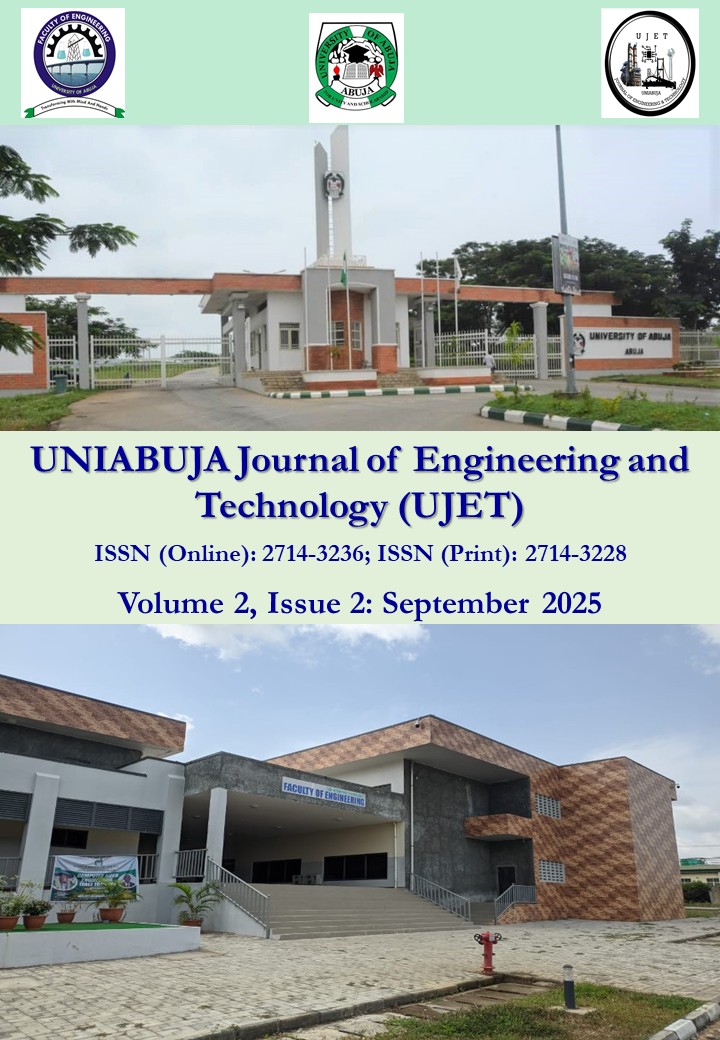Optimization of Tilt Angle, Average Sun Hour and Energy Output of a Smart Solar Generator in Okada Town, Edo State, Nigeria
Keywords:
Tilt angle, average sun hour, energy output, smart solar generator, response surface methodologyAbstract
The study focuses on utilizing solar energy to address the inconsistent power supply in Okada Town, located in Ovia North East Local Government Area of Edo State, Nigeria (latitude 6°7’48.8’’N, longitude 5°39’44.7’’E). Due to its favorable geographic location, Okada receives significant solar radiation, making it suitable for solar power generation. The research involved installing two solar panels: one stationary and one adjustable at six tilt angles (5°, 18°, 30°, 60°, 75°, and 90°), all oriented northward. Over seven days, performance variations were recorded based on tilt angle and average sun hours. Using response surface methodology, a design matrix was created to optimize experimental results involving parameters such as current (I), voltage (V), temperature (T), and tilt angle (Ø). Optimal values for these inputs were determined to enhance solar energy output. The study found that as tilt angle decreases, energy output increases. The best results were achieved with a tilt angle of 47.68°, current of 30A, voltage of 9.51V, and temperature of 49°C, yielding a solar radiation of 68.03 kWh/m² and energy output of 3.864 kWh. An optimal configuration using smart solar generators can deliver 6.8 kWh of energy with an average sun hour of 10.25 hours and an optimum tilt angle of 47.68° in Okada Town.
Published
How to Cite
Issue
Section
License
Copyright (c) 2025 UNIABUJA Journal of Engineering and Technology (UJET)

This work is licensed under a Creative Commons Attribution-NonCommercial-ShareAlike 4.0 International License.
